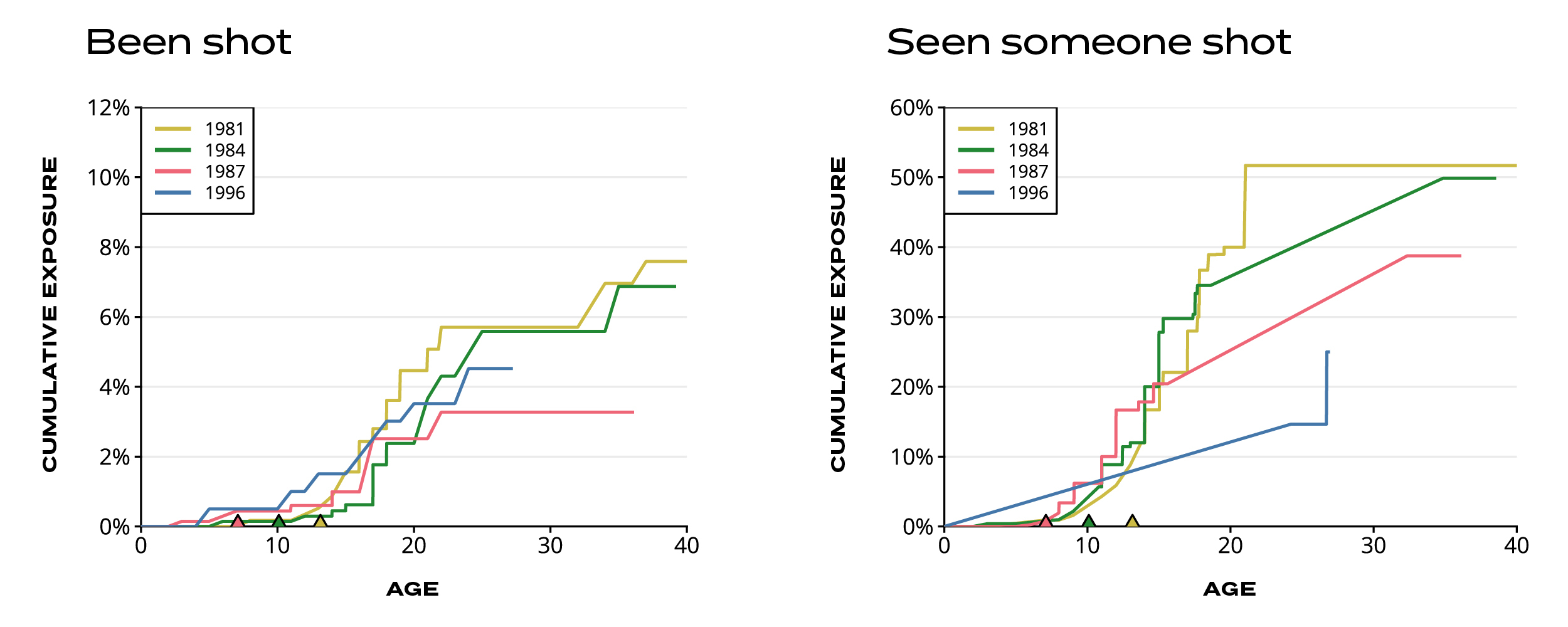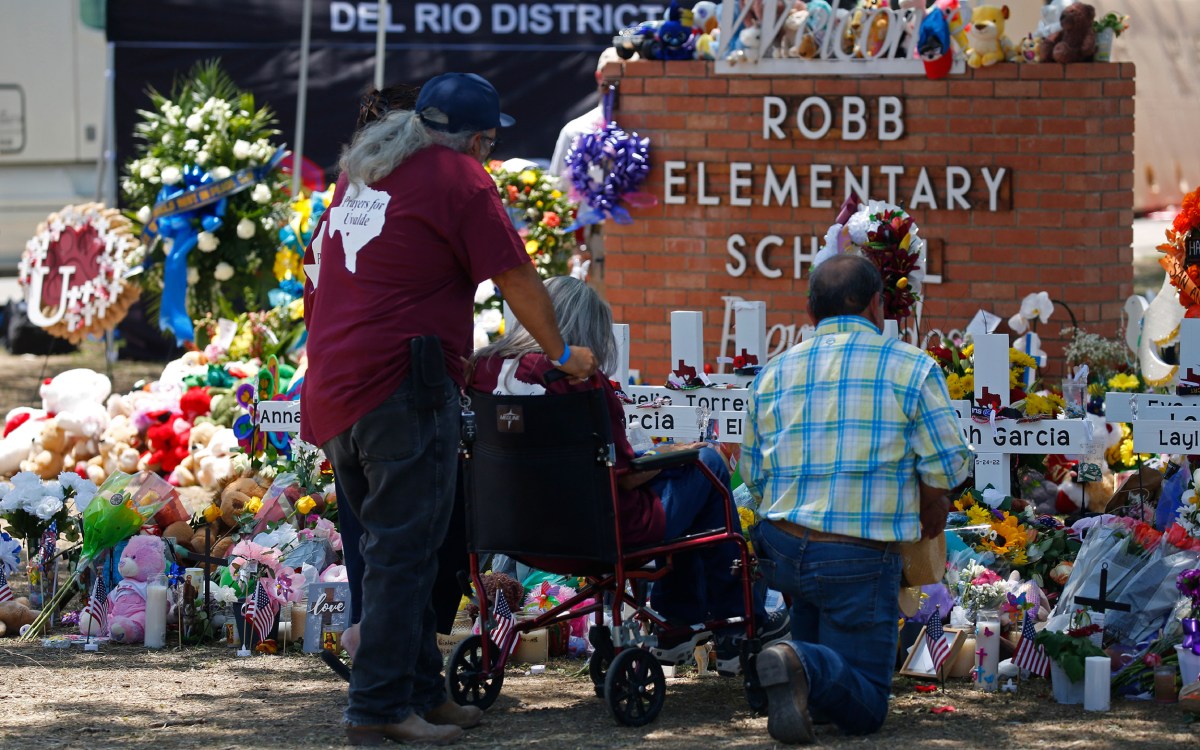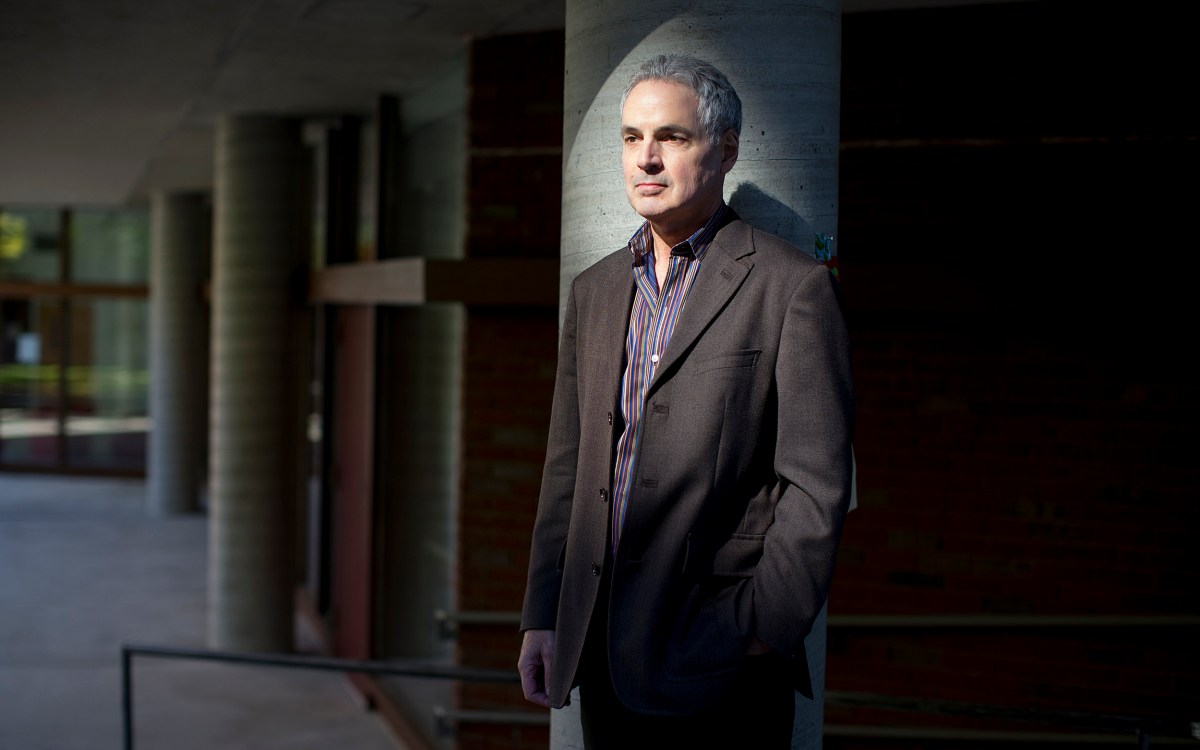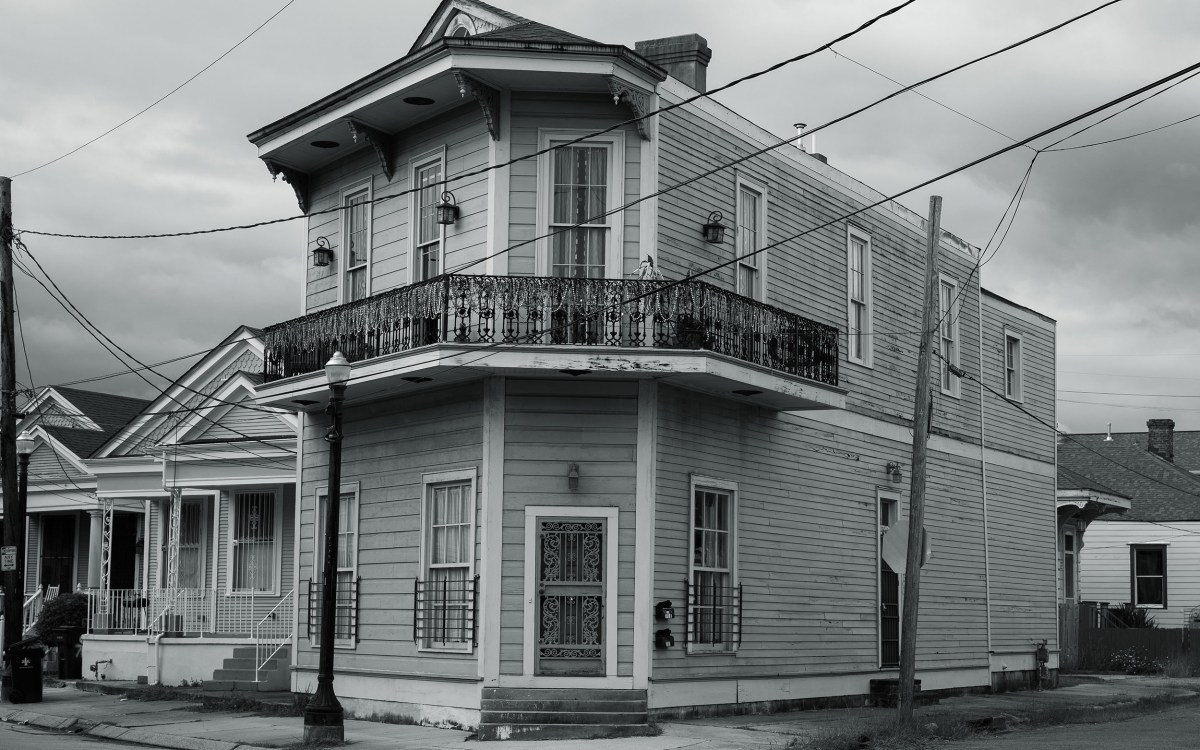
Harvard sociologist Robert J. Sampson and colleagues examined gun violence risk from childhood to middle age.
Kris Snibbe/Harvard Staff Photographer
How birth year predicts exposure to gun violence
In long-term study, risk of getting shot or witnessing a shooting varied by respondents’ race, sex, and when they came of age
A new study examining exposure to gun violence from youth to middle-age reveals stark racial disparities — with more than half of Black and Hispanic respondents witnessing a shooting by age 14 on average — and surprising insights on the role of birth year.
In the first-of-its-kind analysis published May 9 in JAMA Network Open, a Harvard sociology professor and colleagues set out to examine exposure to shootings by race, sex, and birth year using data that followed respondents from childhood up to age 40.
“The idea here is to take a life-course perspective,” said Robert J. Sampson, the Woodford L. and Ann A. Flowers University Professor. “When is exposure to gun violence happening? How does that change over the life course? And how do those patterns vary by race, sex, and all the societal changes that are happening?”
To tackle these questions researchers analyzed longitudinal data on a representative sample of 2,418 Chicago residents — half male, half female — who were born in 1981, 1984, 1987, and 1996. Four rounds of data were collected for up to 25 years.
Making this study possible was the Project on Human Development in Chicago Neighborhoods, which Sampson helped launch in the mid-1990s to follow various birth cohorts. “One of the project’s advantages is the ability to disentangle age and life-course differences from what’s happening in society at large,” Sampson said. The social scientist has drawn on the project’s data for multiple papers and a book, with a forthcoming title arriving next year on the interaction of child and societal development.

Cumulative exposure to gun violence by birth year, up to age 40. Triangles at base of charts indicate the approximate age of each cohort at the time of the 1994 violence peak in Chicago.
Source: “Inequalities in Exposure to Firearm Violence by Race, Sex, and Birth Cohort From Childhood to Age 40 Years, 1995-2021” by Charles C. Lanfear, Rebecca Bucci, David S. Kirk, and Robert J. Sampson
For this study, Sampson and his co-authors found exposure to gun violence varied depending on when the respondent was born. Overall, exposure rises in adolescence — 14 is the mean age of seeing somebody shot and 17 is the mean age for being shot.
“The oldest cohorts were quite disadvantaged,” Sampson noted, “because they came of age during the peak of violence in the United States and Chicago.” U.S. homicide rates topped out in the early 1990s, just as those born in the early ’80s reached their teens. Around half of respondents born in 1981 and 1984 reported witnessing gun violence, while those who had been shot hovered around 7 percent.
As crime rates declined, subsequent birth cohorts faced less exposure to firearms. Those born in 1996 reported the lowest levels of seeing somebody shot — their exposure was half that of the two oldest cohorts — but direct victimization was another story. “Surprisingly,” Sampson added, “unlike witnessing violence, there was no statistical difference between the 1981 and 1996 cohorts in their risk of being shot.”
“In 2015 or 2016, violence in the United States, but particularly in Chicago, started to skyrocket,” said Sampson, who noted that gun-related deaths peaked in 2021 — with nearly all homicides today being gun homicides. “As being shot tends to happen later in the life course, the youngest cohort all of a sudden faced a much higher risk.”

Graphic by Judy Blomquist/Harvard Staff; source: “Inequalities in Exposure to Firearm Violence by Race, Sex, and Birth Cohort From Childhood to Age 40 Years, 1995-2021” by Charles C. Lanfear, Rebecca Bucci, David S. Kirk, and Robert J. Sampson
Sampson’s study confirmed previous research establishing racial disparities in exposure to gun violence. Black and Hispanic participants were more than twice as likely to be directly victimized. More than 7 percent of both Black and Hispanic respondents reported being shot by age 40. Two of the participants, one Black and one Hispanic, were fatally shot. In contrast, 3 percent of white respondents reported being shot. Individuals in the sample from other races were excluded, because their numbers were too small for longitudinal analysis.
The numbers were similarly stark for witnessing gun violence. Fifty-six percent of Black respondents and 55 percent of Hispanics reported seeing someone shot, compared with 25 percent of whites.
“You also see differences in the age distribution,” Sampson said. “Gunshot victimization flatlines among the white population after age 21, whereas it keeps rising all the way up to age 40 for Black and Hispanic respondents.”
More surprising to the researchers were rates of exposure by sex, given all we know about men’s greater involvement in violence. Men were far more likely to be shot — 11 percent of male vs. 2 percent of female study participants — but the differences were modest for witnessing gun violence (58 vs. 43 percent). For Sampson, this finding speaks to the prevalence of firearms in American life.
As a final step, Sampson and his co-authors drew from the Gun Violence Archive to map the proximity of each respondent’s residence to shootings. This approach revealed minimal differences by sex and age, but the racial gap again proved glaring. Blacks were far more likely than Hispanics and whites to live in neighborhoods plagued by shootings in addition to compounded adversities (like concentrated poverty), Sampson has shown in prior work. “But perhaps the greatest adversity of all is violence,” he said.
Studies show that witnessing a shooting has long-term developmental and psychological effects that impact education, relationships, and employment. “The ramifying consequences are profound, which makes gun violence all the more important to pinpoint,” Sampson said.
This research was funded in part by the National Collaborative on Gun Violence Research, the National Institute of Justice, and the Leverhulme Trust through the Leverhulme Centre for Demographic Science.







